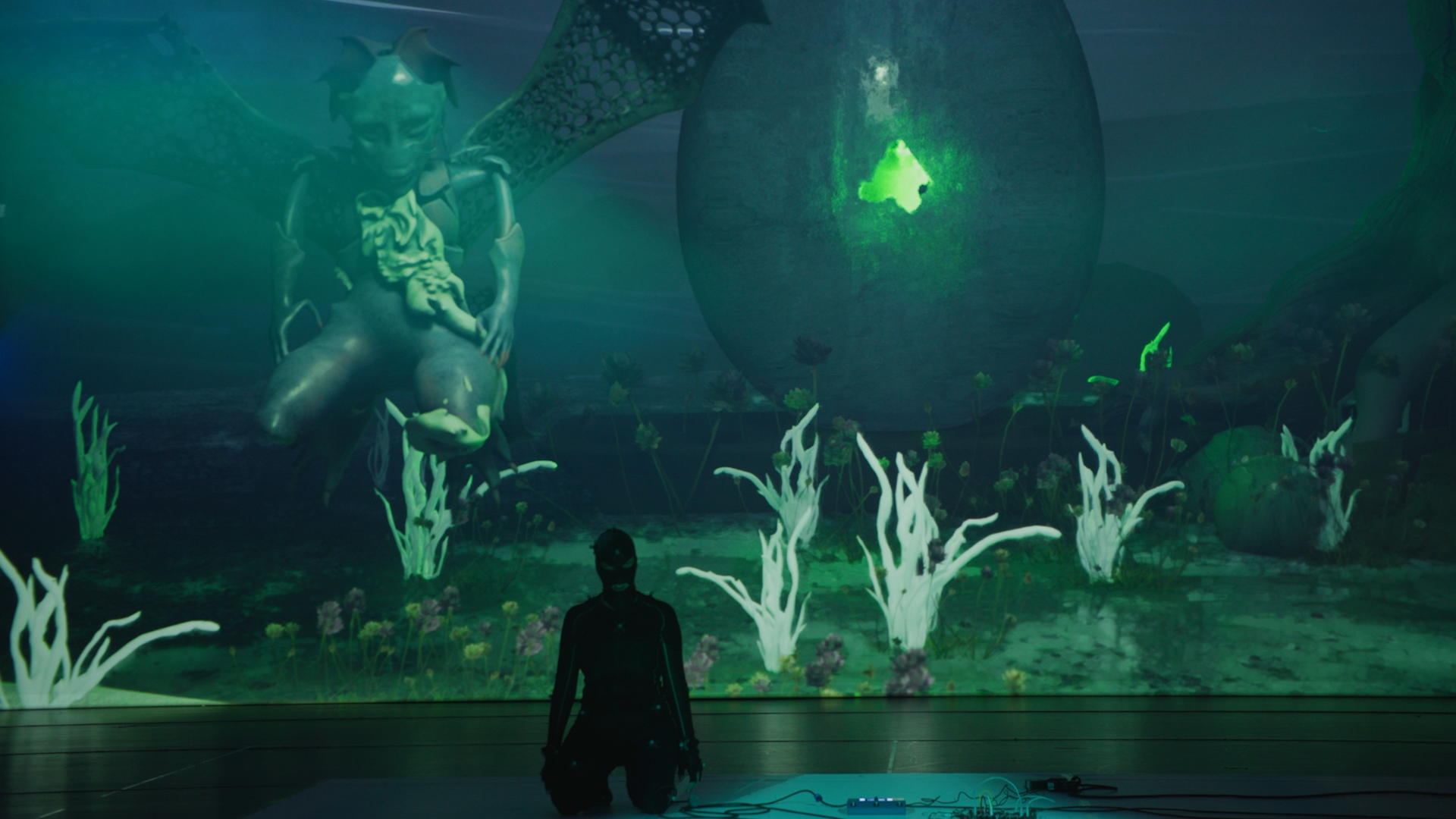Joaquina Salgado
Deriva
PERFORMANCE
2023
DERIVA is an audiovisual performance that explores the forms contained within a virtual organism, observing and modulating its evolution in real time. The work unfolds in a digital environment projected onto the stage, where a series of virtual beings walk in loops, tracing a kind of pilgrimage toward unknown landscapes. These digital entities, suspended in a perpetual choreography, are affected live by the bodily and sonic interpretation of cellist and performer Violeta García, who manipulates their movement through motion capture data.
The human body becomes an interface, a channel of transmission between possible worlds, occupying an intermediary space. Here, deriva—understood as aimless drift—becomes a poetic strategy for contemplating the digital becoming of life, its repetition, fragility, and strangeness.
Developed in residence at the Immersive Art Space of the Zurich University of the Arts (ZHDK), with the support of Pro Helvetia South America, DERIVA raises questions about agency, artificiality, and landscape through a hypnotic visual language that emerges from the intersection of motion capture technology, real-time audiovisual composition, and the body as a modulating forc
About the piece
The technical pipeline for DERIVA was built as a real-time system integrating motion capture, audiovisual synthesis, and 3D rendering across two networked workstations. The performer’s movements were tracked using an OptiTrack optical motion capture system, consisting of infrared cameras and reflective markers. The motion data was streamed via Motive software and transmitted in real time using UDP protocols to two independent machines.
The first machine ran Pure Data (Pd), an open-source visual programming language for audio. In this setup, spatial data from the motion capture system was parsed and mapped to control various audio parameters—such as filtering, amplitude, and spatialization—modulating the live sound produced by the performer in response to her physical presence on stage.
Simultaneously, the motion data was routed to a second computer running Unreal Engine, where a digital avatar was controlled using Live Link. The avatar was rigged and driven directly by the performer's motion capture skeleton, acting as the central figure in a non-linear visual narrative. Additional components within Unreal Engine included real-time lighting systems and a secondary projection mapped onto the stage floor, both of which were dynamically modulated based on the performer’s movements and scene logic.




Concept and Direction:
Joaquina Salgado
Performer:
Violeta García
Technical Development and Visuals:
Joaquina Salgado
Music:
Violeta Garcia
Produced at:
Immersive Arts Space, Zurich University of the Arts (ZHDK)
Supported by:
Pro Helvetia South America
Special thanks:
Immersive Arts Space team
Zurich University of the Arts (ZHDK)

 PH Credits: www.instagram.com/philipperaphael_/
PH Credits: www.instagram.com/philipperaphael_/